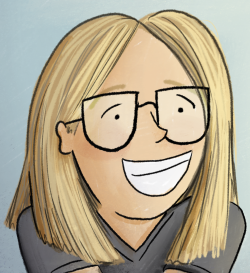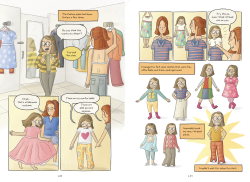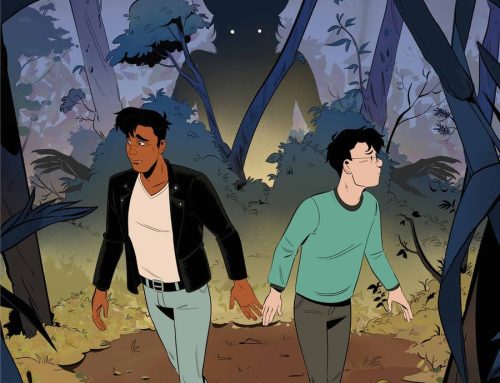test heading

What initially drew you to comics?
I didn’t read a lot of comic books as a kid, but I loved the daily comic strips in the paper. I was also a huge fan of heavily illustrated epistolary journal or letter-style books, like the Amelia’s Notebook series or Kate Klise’s Regarding the Fountain—I loved poring over all the small details and was obsessed with the way they felt like they were really made by kids. But I really came to this genre through working as a cover designer for children’s and YA books. I studied art in college and even though I loved books, I always thought of myself as more of an artist than a writer—for some reason, I thought I had to pick just one. Working as a book designer, though, I had to read for my job almost as much as I made art, and I began to see some creative ways I could put them together. I started reading a lot of middle grade graphic novels around that time, too, and something clicked for me. It felt like the perfect way to blend my two loves and tell the stories I want to tell.
What was your inspiration behind Smaller Sister?
Smaller Sister isn’t a memoir, but it’s based on events from my childhood. Like Lucy, my older sister battled anorexia, and I too developed issues with disordered eating as I went through puberty and the social pressures of middle school. I really wanted this book to be a sister story first—it’s the love between Lucy and Olivia that is the foundation of the book. And as the younger sibling to someone going through a chronic illness, I often struggled to find where to turn for information and guidance. I could always sense that my family was shielding me from the harshest realities of my sister’s disease, and while that came from love, it often made me feel a little in the dark about what was going on and how exactly I fit into it all. Most books and resources that existed at the time that I could find also focused on the person with the disease rather than those around them, so I wanted to really center Smaller Sister on the sibling point of view. I also wanted this to be a book that centered on a family’s emotional experience rather than the explicit, potentially harmful, or triggering details about eating disorders, and the graphic novel format gave me some great tools for showing rather than telling.
What scene or panel sequence did you most enjoy drawing?
I love the sequences of Lucy trying on clothes and putting together looks, either in dressing rooms or, *ahem*, nabbed from her sister’s closet (not that I would know anything about that!). Coming up with all the different outfits was a blast. It was such a fun visual way to show Lucy exploring her identity and how she wants to present herself to the world, and particularly in the way she compares with and contrasts with her sister. I used my wardrobe as a form of self-discovery as a kid—it was a way to express myself before I developed other creative tools and I learned a lot about who I was on the inside by trying different things on the outside. And those scenes are just so colorful and fun! Who doesn’t love a good movie shopping montage?

Maggie Edkins Willis’s Smaller Sister is a debut middle grade graphic novel about body image, confidence, and the everlasting bond of sisterhood.
Lucy’s always looked up to her big sister, Olivia, even though the two are polar opposites. But then, Lucy notices Olivia start to change. She doesn’t want to play with Lucy anymore, she’s unhappy with the way she looks, and she’s refusing to eat her dinner. Finally, Lucy discovers that her sister is not just growing up: Olivia is struggling with an eating disorder.
While her family is focused on her sister’s recovery, Lucy is left alone to navigate school and friendships. And just like her big sister, she begins to shrink.
But with time, work, and a dose of self-love, both sisters begin to heal and let themselves grow. Soon enough, Olivia and Lucy find their way back to each other—because sisters are the one friend you can never ditch.





